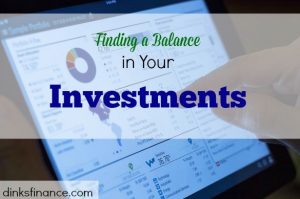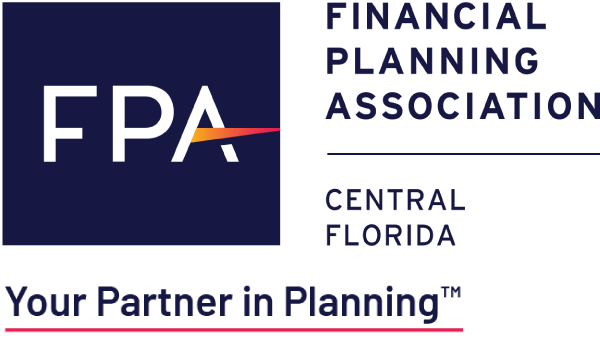
 Retirement Investing: Finding the Right Balance Between Growth, Protection
Retirement Investing: Finding the Right Balance Between Growth, Protection
What’s the first thing people look at when they open their investment account statement? Usually their eyes go right to the bottom line, to see how much their shares of stock, or their mutual fund portfolio, or their retirement plan assets, have lost or gained in value.
That’s not surprising, given the inclination of so many people to prioritize higher returns on their investments in the quest to build a larger nest egg for retirement. But there comes a time when the proximity of retirement may dictate a shift in mindset, whereby protecting nest egg assets becomes just as important as growing them.
“When people shoot for [investment] yield,” explains Certified Financial Planner™ Jon Swanburg of Tristar Advisors in Houston, Texas, “what often happens in doing so is they sacrifice surety and liquidity because they are so focused on return” on their investment. Surety is the assurance or guarantee associated with the value of one’s assets — the surety that an investment will not lose its original value, or principal, for example. Liquidity is the extent to which an investor has ready access to the cash value of an investment position. An ATM card provides the cardholder with instant access to liquid cash in a bank account, for example.
Investors regardless of their age or stage of life need to strike an appropriate balance between growth, surety and liquidity, according to Swanburg. But with retirement looming, the dynamic between the three might need adjusting to reflect the financial realities that often accompany the next phase of life: transitioning from the working world to a fixed income, switching from building to drawing down retirement assets, passing assets to heirs, etc.
“If an investor wants something with yield and liquidity, they are going to sacrifice surety,” says Swanburg. “If they are looking for something with surety and liquidity, they must give up yield. Retirement investing is finding the right balance between these elements so that an investor isn’t taking excess risks in one of these areas.”
While the right balance differs from person to person, based on a range of factors, including age, health, assets, lifestyle preferences and more, a few basic guidelines apply in positioning assets to last throughout retirement, however long it lasts:
For protection, maintain an adequate liquid cash reserve. To generate income in retirement, many people sell off equity assets such as stock market holdings. But when the value of the stocks in a person’s portfolio drops, so does the income-producing capability of those stocks. What’s more, selling shares of stock when their value has plummeted is hardly optimal. One alternative, Swanburg explains, is to maintain a cash reserve from which to draw when stock values drop — as a cushion to make up for that income deficit, and to keep from having to sell off more stocks (or some other asset) when their value is down. Financial professionals recommend building a cash reserve substantial enough to accommodate retirement income needs for a year or more. Those reserves can be stashed in an account that provides maximum surety (but in today’s low-interest-rate environment, an extremely modest return), such as an FDIC-insured money market account, high-yield checking or bank CD.
For protection, build a diverse asset portfolio. “You need assets that move in different directions from one another,” says Swanburg. That’s especially true with retirement approaching, when generally speaking there’s less time for assets inside a nest egg to recover from a sharp loss of value. A well-diversified portfolio of stocks, bonds and other conservative types of investments (for surety), perhaps real estate and/or alternative investments, and cash, should help mitigate volatility while still preserving upside potential, so the lows aren’t as low, the highs aren’t as high, but the opportunity for growth is still there. Asset allocation percentages will vary according to the individual, and they likely will change over time, as a person’s circumstances and needs change. As for the traditional 60% stocks/40% bonds rule of thumb, that diversification model may work for some, but it’s by no means ideal for many.
For growth (yield), stay invested in equities such as stocks. Based on historical data, few asset classes can match the long-term growth potential of stock market investments, according to Swanburg. And because it’s important to maintain a nest egg’s growth potential, it makes sense for many people to maintain a well-diversified exposure to equities. Their approach with those equity investments may need to change, however, Swanburg notes. “You may need to shift away from the high-flying [riskier] investments, in favor of equity investments that provide more consistent returns and limit volatility.”
For protection, consider shifting assets into a vehicle that provides guaranteed income. If the idea of securing an income source you can’t outlast is appealing to supplement other sources such as Social Security, retirement plan distributions, IRAs, a pension and/or systematic drawdowns from a stock portfolio, it may make sense to use some nest egg assets to purchase an annuity that provides a guaranteed income stream, either for a period of time or for a lifetime. Fixed annuities also provide surety, as the principal inside the contract is protected from loss.
Seek protection from inflation. Inflation — the rate at which the price of goods and services increases from year to year — erodes a person’s purchasing power, a particularly important consideration when on a fixed retirement income. What’s more, the cost of goods and services retirees tend to rely upon more than other age groups, such as healthcare and nursing home care, have been rising much faster than the overall inflation rate. So people who are approaching or already in retirement need a nest egg that addresses inflation risk. Stock market investments provide good inflation protection because they tend to track with inflation, meaning when inflation increases, the stock market tends to keep up pretty well. Certain types of bonds, such as Treasury Inflation Protected Securities or TIPS for short, come with an inflation-protection feature built in. So-called inflation riders are also available with some annuities, where annuity income increases either by a flat rate each year or at a varying rate that’s usually pegged to something like the consumer price index.
For growth, look beyond just stocks and bonds. Investors are turning to real estate and so-called “alternative” investments, not just to diversify their nest eggs (and thus dampen volatility) but to grow them. Vehicles such as managed futures funds, long-short funds, hedge funds (and funds of hedge funds) as well as hedge fund replication strategies and commodities are just some of the varieties that fall into the alternative category. These types of investments do come with risks, so be sure to work with a financial professional to evaluate if they’re right for you, and if so, to determine which types of alternatives may be most suitable.
For protection, look to insurance. Oftentimes it makes sense, particularly for pre-retirees and retirees, to protect their nest egg assets from risk by investing in some form of insurance. For example, some type of long-term care insurance can help protect against a financially catastrophic need for extended care due to a serious health issue. Also, maintaining some form of health insurance after age 65 to backstop Medicare can help protect a retirement nest egg and income stream from potentially steep healthcare costs. According to a recent estimate from HealthView Services, a healthy couple age 55 today retiring in 10 years, at age 65, would pay a total of $466,000 in health care expenses from age 65, on. Meanwhile, for people in their 40s and 50s, it’s worth considering short-term and long-term disability insurance, which can replace their income if they’re unable to work to earn money, so they don’t have to tap into their nest egg before it’s time.

